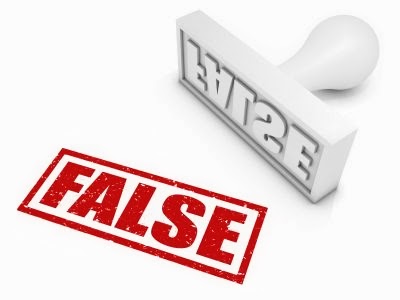I’m all for people having a demo account to practice their trading strategy on. Demo trading certainly has its place, don’t get me wrong. But at the end of the day, if you don’t jump in and get your feet wet, you’re never going to develop the necessary mental skills to succeed in the market. Just like a pilot cannot live his or her life in the flight simulator and a doctor cannot stay in the practice lab forever, you cannot stay on a demo account for too long if you want to succeed at real-world trading.
Demo accounts are not the same as live accounts
Demo accounts are only simulations, in other words, they aren’t ‘real’ and they don’t exactly replicate live trading conditions (obviously, that’s why there called ‘demo’ accounts). More specifically, demo accounts often have different prices, order fills, stop out levels etc. You’re never going to get the same ‘perfect’ experience on a demo account like you will on a live trading account.
So what does this mean for you? Quite simply, it means demo trading will not teach you as good or as much as live trading will. If your end goal is to trade consistently and make real money, then you need to start trading a live account before too long. Once you have learned an effective trading strategy you really only need to practice it on a demo account for one to three months before trying live trading.
Important note: Just because I am saying you should get your feet wet and try live trading after one to three months does NOT mean you should go risking a lot of money, even if you have a lot to risk. I STRONGLY recommend you ease into live trading by risking only a dollar amount that you literally do not care if you lose or not. Especially when you first start trading live, it is critically important that you start with a very small dollar-per-trade risk, because you need to get comfortable with your broker’s trading platform and how it functions on live account vs. demo account, among other things.
Eventually, as you build experience and confidence with small amounts, you can increase your risk per trade to a dollar amount that matches your trading ability and risk tolerance. It’s also important to note that these dollar-per-trade risk levels will vary significantly from trader to trader, there simply is no ‘blanket’ risk management system that will work perfectly for every trader, despite what you may read on other websites. This is why I am a proponent of measuring your risk in dollars, not percentages or pips; because it gives you a very intimate and personal way to determine what you’re personally comfortable with potentially losing on any given trade.
At some point, you gotta force yourself to move to a live account, don’t be trapped on demo forever. Don’t train yourself on false pretenses. Convincing your brain that you’re good on demo, only to move on to a live account where your performance sinks like a rock, is not a productive or wise thing to do. This underscores the question I’ll answer in the next section; why do people trade well on demo but then start losing money when they go live?
False pretenses breed false confidence
 As we discussed above, demo accounts don’t function exactly the same as live accounts, and they certainly don’t build ‘real’ mental trading skills like a live account does.
As we discussed above, demo accounts don’t function exactly the same as live accounts, and they certainly don’t build ‘real’ mental trading skills like a live account does.
The main reason traders tend to do much better on demo than they do on a live account, is simply because on demo, they don’t have emotions clouding their judgment or influencing their trading decisions…since there simply isn’t any emotion involved.
There is no attachment to the money in a demo account, even if you try to trade a demo account with the same amount you’re planning to trade live, and you exactly stick to your trading plan, it still won’t feel the same. Traders often complain of sweaty palms and a racing heart beat the first time they trade a live account, it’s because the gravity of the situation finally sets in and it starts to actually change both their mental and physical state of being.
It’s not always apparent to people that trading ‘paper money’ is the main reason they’re actually making money on their demo account. Some of the things that the no-consequence world of demo trading causes traders to do include:
- Loading up on position size beyond any rational or logical size that you’d ever be able to trade on a live account
- Developing confidence and abilities under partially false circumstances.
When you trade real money you feel the emotional ups and downs, when you trade a demo account, you don’t. Therefore, the abilities and confidence you develop on a demo account will not necessarily help you on a live account, and in fact they can actually hurt you.
Traders have a tendency to move on to live account trading with false-confidence and high hopes built on the false-pretenses of demo trading, this can cause them to immediately start losing money on a live account because they don’t fully understand the risk involved, since there really was no risk on the demo account.
The sooner you move to a live account the better it is for you, you don’t have to ‘load up , start small and build up, then you will gain an understanding of what the real world trading is all about.
A pro football player on a professional team had a bad season and he goes back to training, but he never gets a chance in a live game again. How is he gonna get his ‘real’ game back? The answer is, he won’t, if he doesn’t get back out and practice in real games.
A doctor will never get real experience if he or she never operates on a real patient. If a doctor makes errors he or she may go back to training, but if they don’t get back working with real patients, they’ll never get the real feel back.
How to get started properly on a live trading account
If you’re playing a game of poker for fun, without any real money involved, you’re going to think and feel differently than if you are playing with a $500 buy in. The same thing applies to trading; you will think and feel differently about trading on a demo account vs. trading on a real account. Thus, if you get good on a demo account it doesn’t necessarily mean you’ll trade well with your real, hard-earned money on the line. What you learn on a demo account will not matter if you can’t trade equally as good on a live account. Clearly, making the transition from demo account to live account is important, and you need to do it sooner rather than later, but there are some important things to consider before you being trading live…
In what might seem like an ironic twist, the ‘key’ to trading well on a live account is recreating the same type of detached mental state that naturally occurs when you’re trading a demo account. While I don’t believe it’s ever 100% possible to be fully detached from live your trades like you are on a demo account, I do think you can get pretty darn close…
Here are some tips on how to lighten the emotional impact of live trading…
• Start small and increase lot size only as you gain real-world / live account trading experience and confidence and your equity curve begins trending higher. Even starting with a small risk level will help you get the feel and skills you need to trade a live account, you don’t need to jump into live trading risking large portions of your trading account, and you shouldn’t! Don’t increase lot size too soon, this is a HUGE mistake that many traders make .
• Accept that losing is part of trading, and learn to deal with it through proper money management . The fact that you will have losing trades does not truly set in until you start trading a live account, because you don’t feel the losses on a demo account.
• Learn and start practicing a simple trading method first – be sure you can confidently say you feel like you know it inside and out before you try trading it live. Don’t just totally ‘wing it’, you DO need to use a demo account for one to three months as I mentioned earlier, but beyond that you’re probably doing yourself a disservice by staying on demo. Sooner, rather than later, you’ll need to make the decision to jump in and start ‘swimming’, because if you don’t learn to swim in with the ‘big fish’, you’ll never have what it takes to stay afloat in the ‘ocean’ that is real-world trading.
I hope your Best Trading Mindset
Bilgehan TIRPANCI
Financial Trader
